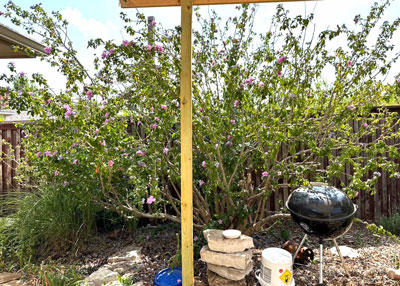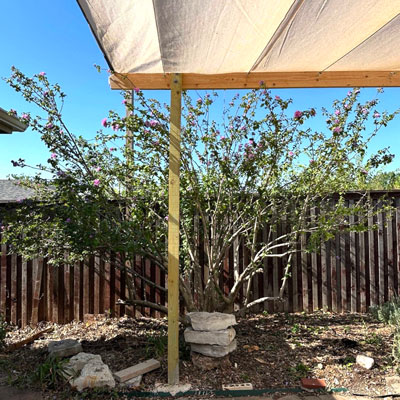Q&A – Ask Neil: September 28, 2023
(Please read these instructions carefully.)
Before you post your question, please look at recent issues to see if someone else has already asked it. You might find your answer there.
How to submit your question…
(Note: You may need to allow a pop-up window to come up in order to get the link for sending your photo(s). If you have already submitted your question and didn’t see the pop-up window, please click here.)
• Click the link provided below to post your question. After you submit your question, a new window will pop up giving you the address to which you can e-mail a SHARP, HIGH-RESOLUTION PHOTO to accompany your question. Please DO NOT SEND THUMBNAIL PHOTOS in case I need to zoom in to see things.
• Click here to post your question.
• Please ONLY POST YOUR QUESTION ONE TIME. We can only accept a set number of questions each week, and when we get duplicates it costs other people their chances.
• One question per reader, please.
• Please use this only for posting questions – not for standard emails.
• Watch for your answer in the following week’s e-gardens.
• I choose those of greatest general interest. For example, plant IDs seldom make the cut.
• I must have your first name or initials.
• I must have your city or county. (Texas is a very large state.)
QUESTION 1
HOW CAN I CONTROL THESE TWO WEEDS, AND WHERE DO THEY COME FROM?
Question: My Seek app identifies these two photos as Chamberbitter and Monocots grass. They are invading my lawn. The more I pull out the plants (roots included), the more I have. Is my identification correct? How do they spread? Where do the seeds come from? Robert O., Bedford.

Answer: I’m not a believer in plant ID apps. And, as mentioned in the notes above, I don’t go into plant ID much in this Q&A area because it often takes so long to track things down. Your one plant with the compound leaves, however, is rattlebox. It’s very attractive as a seedling, but it becomes ultra-ugly as it grows large. Its seeds are widely distributed when there are vacant lots, open areas, etc. nearby. Broadleafed weedkiller sprays (containing 2,4-D and other ingredients) will quickly eliminate it.


Your other weed was apparently put into a “sloppy” category by your app. “Monocots grass” merely means that it’s a grass and not a broadleafed weed. That is not a plant name. Plus, it is also not a correct statement. It looks like buttonweed. If so, it’s one of the most difficult broadleafed weeds of all to eliminate. I’ll let you confirm that ID since I couldn’t see any flowers (the way plants are actually identified) in your photo, but I’ve attached a photo from the University of Georgia Extension Service showing the flower.
QUESTION 2
WHAT ARE YOUR FAVORITE PERENNIALS TO ATTRACT BUTTERFLIES AND HUMMINGBIRDS?
Question: What are your favorite perennials to attract butterflies and hummingbirds? M A C, Tarrant County.
Answer: Both prefer tubular flowers, so I plant several of the best types of salvias, many lantanas, pentas (annuals) and Madame Galen trumpetcreepers. I also have hummingbird feeders in their flight paths. There are much longer lists available online, but you asked for my own personal favorites.
QUESTION 3
OUR PECAN’S LIMBS ARE DRAGGING DOWN. A COUPLE HAVE BROKEN OFF. WE HAVE NEVER SEEN IT DO THIS BEFORE.
Question: Our pecan tree, at least 20 years old, has limbs that are dragging down. A couple have broken off. We have never seen it do this before. It has lots of pecans on it. It usually does. I watered it this summer twice a week. But this is the first time. Velma M., Whitewright, Grayson County.
Answer: I didn’t see a question, but I’m guessing you’re wondering why it happened this year, also what to do with it now.
This year is seeing a heavier pecan crop than the past several years, at least in my general area (one county south of you). That does happen with pecans, and we gardeners must take notice to thin the loaded branches before they break. Use selective pruning of a few small branches to reduce the total weight before they break. You’ll want a long-handled pole pruner to do this work from the ground. You’ll be trimming off branches that are less than 3/4-inch in diameter, so there’s little risk of getting hurt as they come down.
As for the broken branches, you’ll need to cut the jagged stubs to leave smooth surfaces and essentially no stubs. Leave a short section of branch collar for better healing. Do that pruning as soon as possible, but be very careful working around a tree that has already demonstrated compromised strength. You may want to hire a certified arborist to do this work for you.
(I was unable to open your photos.)
QUESTION 4
CAN YOU IDENTIFY THIS GRASS THAT HAS SPREAD INTO MY YARD?
Question: Can you identify this grass that has spread into my yard from the neighbor’s yard? I believe their lawn service brought this next to the retaining wall, as it is nowhere near the golf course behind us. Carolyn D., Heath, Rockwall County.

Answer: It certainly looks like very dry St. Augustine. It’s easy to pick up a sprig of two of St. Augustine in soil or with a piece of bermudagrass sod. It is the more dominant of the two grasses. MSMA used to be the consumer product to eliminate it without harming your bermuda lawn, but now it is only allowed for use in very specific locations and by commercial applicators. Golf courses are one of them. Without officially recommending this, it appears to me that some people seem to be able to find MSMA and use it to eliminate unwanted grasses such as dallisgrass and St. Augustine from bermuda turf. But that’s merely been my observation.
QUESTION 5
WOULD PEAT MOSS HELP MY ST. AUGUSTINE IF APPLIED NOW?
Question: Last fall something ravaged my St. Augustine. I treated with a fungicide more than once, but nothing stopped it. The grass turned yellow and then died. I am seeing yellowish blades now. Does peat moss help? Dennis R., Fort Worth.
Answer: I so want to be able to help with all the St. Augustine troubles, but they are so similar in appearance that I find it almost impossible, especially without seeing the lawns. For that reason, I have been leaving a complete diagnostic discussion on my website. I believe you’ll find it will help you.
My guess would be, if you applied the one fungicide that is recommended for St. Augustine diseases, Azoxystrobin, without success, that you were probably experiencing chinch bug damage left over from summer. There was a ton of it last year, just as this year. Fungicides obviously wouldn’t have helped with an insect.
For the record, the old peat moss treatment for the spring disease take all root rot was replaced when Azoxystrobin was brought into the consumer market 6 or 7 years ago.
QUESTION 6
IS THIS WINTER DAMAGE, INSECTS, OR DISEASE?
Question: I have several of these oak trees on my farm in Eastland County. This starts at the top of the tree and works its way down. Is this winter damage, insects, or disease? Gary S., Olden.


Answer: We are hours away from October. These leaves have been out there in one of the most brutal summers in Texas history. It’s amazing trees haven’t shed more leaves than these have. What I see on your close-up is limited sawfly feeding that is very normal for several species of oaks. I have it on a young bur oak in our woods right now. The leaf drop from the top-most branches is just because of heat, drought, sawflies and other pains of living in Texas through the summer of ’23. Those outer branches were most exposed. I see no cause for concern.
QUESTION 7
SHOULD I PRUNE MY MANDEVILLAS AND ESPERANZAS NOW OR NEXT SPRING?
Question: I’m growing mandevillas and Esperanzas in large containers. Should I prune them this fall before bringing them inside or wait until spring? Also, how much should I trim? Jo F., Bonham.
Answer: I always prune my plants in the fall. I put them back into my greenhouse, and space is so valuable that I don’t want them sprawling all over the place. It also gives them a chance to fill back in and become handsome before I put them back outside in the spring. Hopefully you have a bright, sunny spot for them where you’ll be putting them over the winter.
QUESTION 8
LOOK AT MY ROSE-OF-SHARON NOW!
Question: From a few weeks ago, I took your advice for my ailing rose-of-Sharon. Lots of water. We removed the clump of ornamental grass. We moved the grill. I thinned the plant, and it looks better to me. I removed two large branches that were growing toward the drive. I may prune more next year. Thanks for your advice. Becky G., Sherman.


Answer: Great work, Becky! Just to make it look even prettier in a hurry, I would suggest positioning the stones right behind your metal edging as a bit of a retaining wall. They could serve as “pedestals” of sorts for a handful of small, decorative pots with colorful annuals in the summer. That, plus the evergreen groundcover and you’ll have a nice little landscape. I assume you’ve made provision to pull the cover in case of ice or snow?
